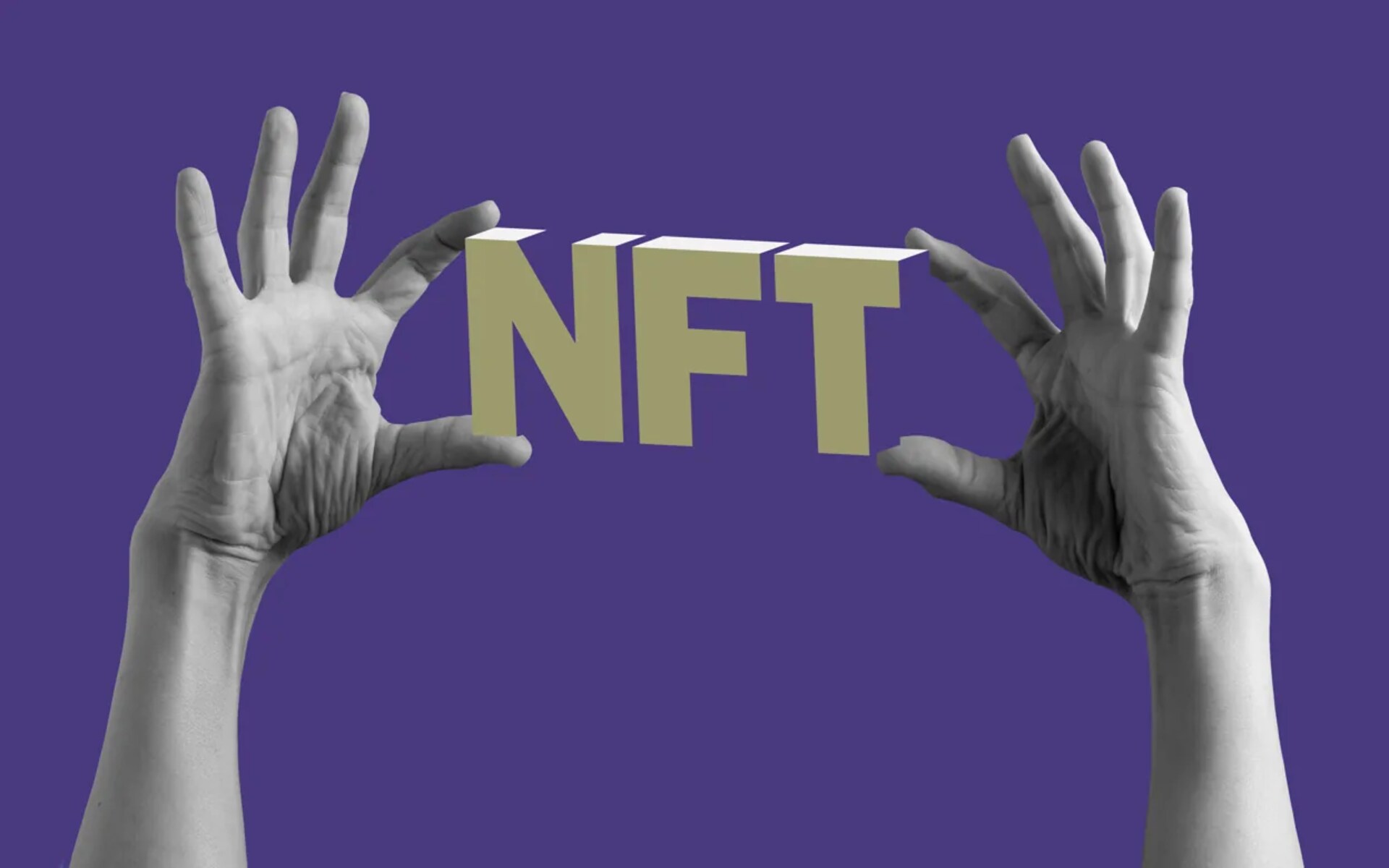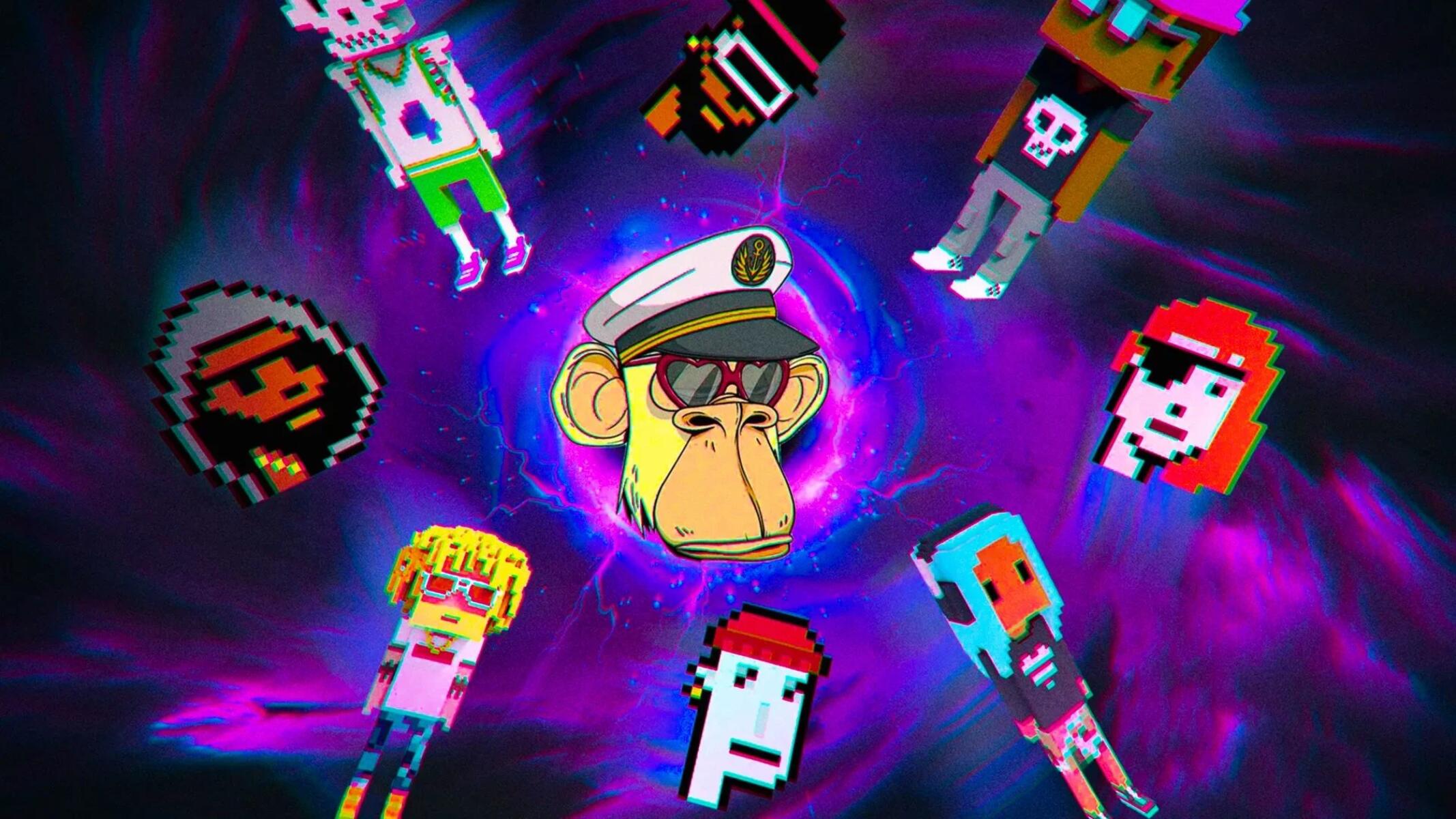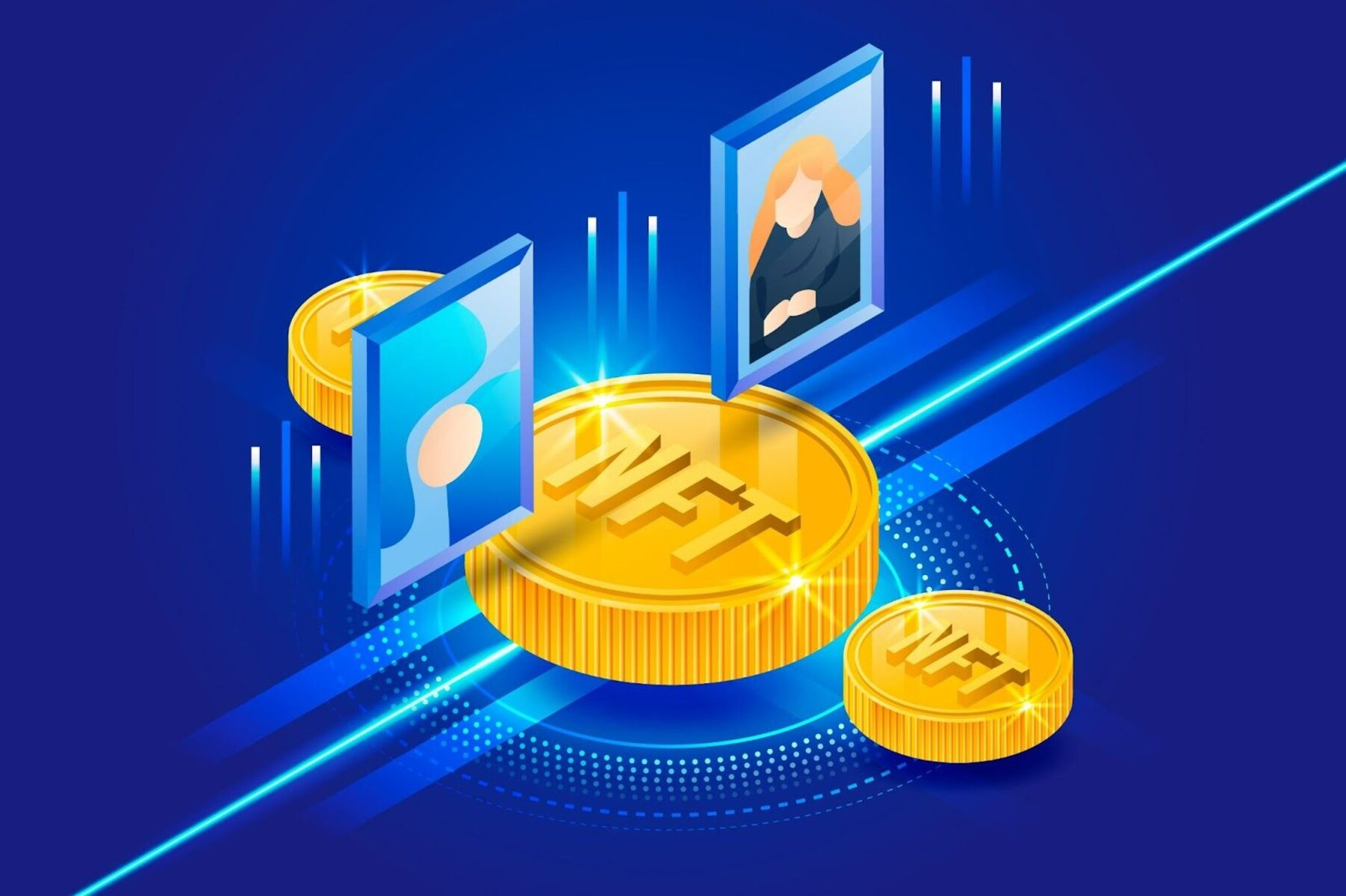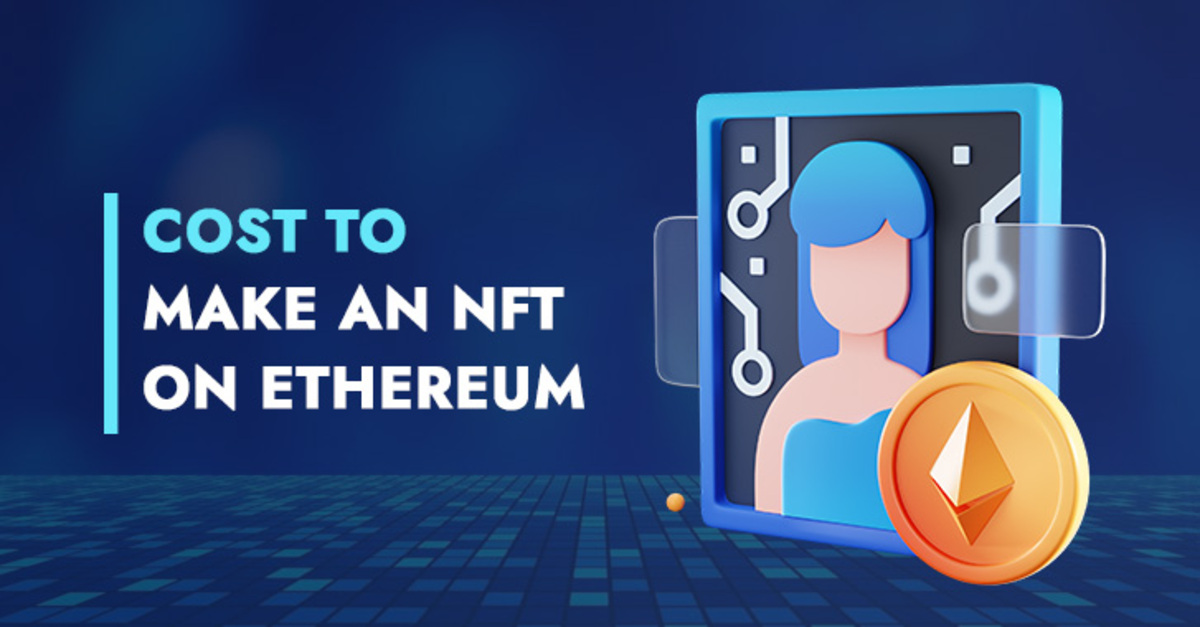Introduction
The world of art has undergone a significant transformation with the emergence of Non-Fungible Tokens (NFTs). These unique digital assets have taken the art community by storm, offering a new way to buy, sell, and trade digital art pieces. With skyrocketing prices and record-breaking sales, NFTs have garnered immense attention and intrigue.
But what exactly is an NFT? In simple terms, an NFT is a digital certificate of ownership that is stored on the blockchain. Unlike cryptocurrencies such as Bitcoin or Ethereum, an NFT is indivisible and unique, making it impossible to replicate or interchange. This scarcity and uniqueness are what make NFTs so sought after and valuable.
The rise of NFTs in the art world has disrupted traditional notions of art ownership and provenance. Artists, digital creators, and even traditional art institutions are embracing NFTs as a way to monetize their digital creations and reach a global audience. The ability to buy and sell digital art with the guarantee of authenticity and provenance has added a new layer of legitimacy to the digital art market.
In this article, we will explore the world of NFTs and delve into the most expensive NFTs ever sold. From groundbreaking digital artworks to unique digital collectibles, these NFTs have shattered records and captivated art enthusiasts and collectors worldwide. Let’s take a closer look at some of the standout pieces that have reached astronomical prices and cemented their place in NFT history.
Note: It’s important to note that the prices mentioned in this article are accurate at the time of writing. The NFT market is highly volatile, and prices may fluctuate over time. The purpose of this article is to highlight the remarkable sales and provide insights into the high-value NFT market.
What is an NFT?
Non-Fungible Tokens (NFTs) have been making headlines in recent years, but what exactly are they? In simple terms, an NFT is a unique digital asset that represents ownership or proof of authenticity for a specific item in the digital world. Unlike cryptocurrencies such as Bitcoin or Ethereum, NFTs are indivisible and cannot be exchanged on a one-to-one basis.
The uniqueness of NFTs is what sets them apart. Each NFT has a distinct value and cannot be replicated or interchanged with other tokens. This scarcity and uniqueness make NFTs highly desirable in the digital art world and beyond.
NFTs are built on blockchain technology, which ensures security, transparency, and immutability. The blockchain serves as a decentralized ledger that tracks the ownership and transaction history of each NFT. This eliminates any doubts about the authenticity or provenance of a digital asset, making NFTs highly valuable for digital artists and collectors.
One of the key features of NFTs is their ability to encompass various types of digital assets. While digital art is the most popular form of NFT, these tokens can also represent other forms of digital content such as music, videos, virtual real estate, virtual goods, and even tweets. NFTs provide a way for creators to monetize their digital assets and provide collectors with a unique ownership experience.
The value of an NFT is determined by various factors, including the reputation of the artist or creator, the scarcity of the token, the demand in the market, and the overall uniqueness and desirability of the digital asset. These factors can lead to NFTs selling for exorbitant prices, reaching millions of dollars in some cases.
It’s worth noting that owning an NFT does not grant copyright or intellectual property rights to the underlying digital asset. The creator still retains the rights to their work, but the NFT represents ownership or a proof-of-purchase certificate.
In recent years, the adoption and popularity of NFTs have grown exponentially, attracting both seasoned collectors and newcomers to the digital art market. The ability to buy, sell, and trade digital assets with guaranteed authenticity and provenance has revolutionized the art world and created new opportunities for artists and collectors.
As we delve into the most expensive NFTs ever sold, we’ll see how these unique digital assets have captivated the art community and redefined the concept of art ownership in the digital age.
The Rise of NFTs in the Art World
The emergence of Non-Fungible Tokens (NFTs) has had a profound impact on the art world, revolutionizing the way digital art is created, bought, sold, and experienced. NFTs have opened up a new realm of possibilities for artists, collectors, and art enthusiasts, challenging traditional notions of art ownership and transforming the art market.
One of the key reasons behind the rise of NFTs in the art world is the ability to authenticate and prove ownership of digital art. In the digital space, replicating and distributing digital files is effortless. However, NFTs provide a solution to this challenge by using blockchain technology to establish the uniqueness and scarcity of each digital artwork. This gives collectors confidence in the authenticity and provenance of the art they own.
NFTs have also democratized the art market by providing a platform for artists to showcase and sell their digital creations directly to their audience. In the traditional art world, artists often rely on galleries and intermediaries to sell their work, which can limit exposure and financial opportunities. With NFTs, artists can bypass these gatekeepers, retain more control over their art, and reach a global audience of potential buyers.
The rise of NFTs has also sparked a cultural shift in how we value and perceive digital art. In the past, digital art was often seen as intangible and less valuable compared to traditional physical artworks. However, NFTs have changed this perception by introducing the concept of unique ownership and scarcity to the digital realm. This has led to an increased appreciation of digital art and a recognition of its cultural and artistic significance.
The financial aspect of NFTs has also contributed to their rise in the art world. With record-breaking sales and high-value transactions, NFTs have attracted investors and collectors looking to capitalize on this emerging market. The potential for significant returns on investment, coupled with the excitement and enthusiasm surrounding NFTs, has drawn attention from both the art community and the mainstream media.
Moreover, NFTs have enabled artists to monetize their digital creations in new and innovative ways. Through auctions, secondary sales, and royalties, artists can earn ongoing revenue from their art, even after the initial sale. This provides artists with greater financial stability and encourages them to continue creating and pushing boundaries in the digital art space.
The rise of NFTs in the art world has not been without controversy. Concerns about environmental impact, copyright infringement, and the potential for fraud have been raised. However, as the technology and market mature, efforts are being made to address these challenges and ensure the sustainability and integrity of the NFT ecosystem.
In the following sections, we will explore some of the most expensive NFTs ever sold, showcasing the immense value and impact these unique digital assets have had on the art market. From groundbreaking digital artworks to rare digital collectibles, these NFTs have captured the imagination of collectors and solidified their place in art history.
Exploring the Most Expensive NFTs Sold
The world of Non-Fungible Tokens (NFTs) has witnessed some remarkable sales, with certain digital assets fetching astronomical prices. These high-value NFTs have not only made headlines but have also garnered attention for their impact on the art market and the potential value of digital art. Let’s take a closer look at some of the most expensive NFTs ever sold.
1. Beeple’s “Everydays: The First 5000 Days”:
Perhaps the most notable and ground-breaking sale in the NFT space, this digital artwork by the artist Beeple was auctioned at Christie’s for a staggering $69.3 million. The artwork is a collage of 5,000 individual images created by Beeple every day for 13 years, showcasing the artist’s evolution and dedication to his craft.
2. CryptoPunk #7804:
CryptoPunks, a collection of 10,000 unique 24×24 pixel art characters, have gained immense popularity in the NFT market. One particular CryptoPunk, #7804, was sold for a jaw-dropping $7.6 million. This specific CryptoPunk features a rare combination of attributes, making it highly desirable and valuable among collectors.
3. CryptoKitties’ “Dragon”:
CryptoKitties, one of the earliest NFT projects, created a frenzy in the NFT world. “Dragon,” a rare and highly sought-after CryptoKitty with unique traits, was auctioned for an impressive $170,000. The popularity of CryptoKitties helped pave the way for the NFT boom, highlighting the potential value of collecting and breeding unique digital assets.
4. Kevin McCoy and Anil Dash’s “Quantum”:
“Quantum,” considered one of the first NFTs ever created, holds historical significance in the NFT space. This digital artwork by Kevin McCoy and Anil Dash was sold for $1.4 million, showcasing the early adoption and recognition of NFTs as a viable digital art medium.
5. CryptoPunk #7804:
Another CryptoPunk, #7804, makes the list of the most expensive NFTs sold. This unique digital collectible was purchased for a staggering $7.6 million. CryptoPunks have become synonymous with the NFT market, representing the potential value in owning and trading distinct digital assets.
These sales exemplify the growing interest in NFTs and the willingness of collectors to invest significant sums in digital art. The scarcity, uniqueness, and cultural relevance of these NFTs contribute to their elevated prices, showcasing the value collectors place on owning and showcasing these digital assets.
It’s important to note that the market for NFTs is highly volatile, and prices may fluctuate over time. While these high-value sales demonstrate the potential value of NFTs, it’s crucial to approach the market with caution and conduct thorough research before making any investments.
As we continue to witness groundbreaking sales and new developments in the NFT space, it’s clear that these unique digital assets have disrupted the art market and have the potential to reshape the way we perceive and interact with art in the digital age.
Beeple’s “Everydays: The First 5000 Days”
Beeple’s “Everydays: The First 5000 Days” is a groundbreaking digital artwork that has left an indelible mark on the world of Non-Fungible Tokens (NFTs). Created by artist Mike Winkelmann, also known as Beeple, this NFT represents a collage of 5,000 individual images that the artist created over the span of 13 years.
The sale of “Everydays: The First 5000 Days” at Christie’s auction house made headlines as it fetched an astonishing $69.3 million. This record-breaking sale demonstrated the immense value and potential of NFTs, propelling Beeple into the forefront of the digital art world.
What makes this NFT truly remarkable is the sheer dedication and commitment behind its creation. Beeple’s daily art project, where he created and shared a new digital artwork every day for 13 years, showcases his creative process, evolution as an artist, and the power of consistency. The NFT encapsulates this journey, preserving each of the 5,000 images in a single digital collage.
The sale of “Everydays: The First 5000 Days” had a profound impact on the perception of digital art, solidifying its legitimacy and provoking conversations about the value and ownership of digital creations. This NFT has become a symbol of the possibilities inherent in the digital medium and has ignited a newfound appreciation for the artistic potential of NFTs.
Beeple, known for his thought-provoking and often politically charged digital art, has been a trailblazer in the NFT space. His success has inspired countless artists to explore the possibilities of NFTs and has opened doors for creatives to monetize their digital creations in unprecedented ways.
“Everydays: The First 5000 Days” represents more than just a digital artwork; it signifies a significant cultural shift in the art world. With the sale of this NFT, Beeple has demonstrated that digital art is not only valuable but also capable of capturing the attention and admiration of collectors and art enthusiasts worldwide.
The $69.3 million sale of Beeple’s NFT marked a major milestone in the NFT market, elevating the profile and recognition of digital art within the wider art community. It generated a level of excitement and interest that has continued to fuel the growth of the NFT market and has encouraged artists and collectors alike to explore the limitless possibilities offered by this emerging technology.
As Beeple’s “Everydays: The First 5000 Days” continues to make waves in the art world, it serves as a testament to the transformative power of NFTs, pushing boundaries and redefining the concept of art ownership in the digital age.
CryptoPunk #7804
CryptoPunks have become one of the most iconic and sought-after collections in the world of Non-Fungible Tokens (NFTs). Within this collection, CryptoPunk #7804 stands out as an exceptional and highly valuable digital collectible.
CryptoPunks are a series of 10,000 unique 24×24 pixel art characters, each with distinct attributes and characteristics. These digital collectibles have gained immense popularity and value among collectors, and CryptoPunk #7804 is no exception.
CryptoPunk #7804, also known as the “Alien,” fetched an astonishing price of $7.6 million in a high-profile sale. What sets this particular CryptoPunk apart is its rarity and unique attributes. The “Alien” CryptoPunk is one of nine in the collection that features an extremely rare combination of attributes, including an alien-like appearance, a beanie hat, a cigarette, and vibrant green skin.
The sale of CryptoPunk #7804 demonstrates the growing appetite for unique and scarce digital assets. Collectors and enthusiasts recognize the historical and cultural significance of owning a rare CryptoPunk, making these digital collectibles highly coveted in the NFT market.
CryptoPunks have paved the way for the popularity and rise of avatar-based NFTs, where individuals can own and display personalized digital identities. These digital characters hold emotional and cultural value for their owners, as they represent a form of self-expression and identity within the digital realm.
Moreover, the sale of CryptoPunk #7804 has further solidified the notion of NFTs as a viable investment opportunity. Collectors and investors have recognized the potential for significant returns on investment by acquiring rare and valuable NFTs like CryptoPunks. The unique nature and increasing demand for these digital assets create a market that continues to appreciate in value.
CryptoPunk #7804 serves as a symbol of the cultural impact and the status associated with owning rare and unique digital collectibles. The value of this CryptoPunk extends beyond its pixelated representation; it represents a piece of digital history and contributes to the ongoing exploration of digital art, ownership, and self-expression in the digital age.
As the CryptoPunk collection continues to captivate the art community and collectors worldwide, the market for these digital collectibles is expected to grow and evolve. The high price achieved by CryptoPunk #7804 reinforces the idea that NFTs provide a new frontier for art, creativity, and investment, pushing the boundaries of traditional art ownership and appreciation.
CryptoPunk #7804
CryptoPunk #7804, also known as the “Alien,” is one of the most sought-after and valuable digital collectibles within the CryptoPunks collection of Non-Fungible Tokens (NFTs). With its unique attributes and rarity, CryptoPunk #7804 has captured the attention and admiration of collectors and enthusiasts alike.
The CryptoPunks collection consists of 10,000 unique 24×24 pixel art characters, each with distinct traits and features. Amongst this vast selection, CryptoPunk #7804 stands out due to its alien-like appearance and a combination of rare attributes. These attributes include a beanie hat, a cigarette, and vibrant green skin, which contribute to the distinct and memorable nature of this particular CryptoPunk.
The sale of CryptoPunk #7804 made headlines when it fetched an astounding price of $7.6 million. This exceptional sale not only highlights the growing demand for CryptoPunks but also emphasizes the value placed on rare collectibles within the NFT market.
The scarcity and uniqueness of CryptoPunk #7804 is a significant factor in its elevated value. Collectors are drawn to the rarity of the “Alien” CryptoPunk, as only nine exist within the entire collection with the same combination of attributes. This exclusivity and limited supply have driven up its desirability and, subsequently, its price.
CryptoPunks have played a crucial role in establishing the market for NFT collectibles. These digital characters have become synonymous with the concept of avatar-based NFTs, where individuals can represent themselves in the digital realm with unique and personalized identities. Within this context, CryptoPunk #7804 holds not only monetary value but also emotional and cultural significance for its owner, who may identify with or resonate with the character and its attributes.
The sale of CryptoPunk #7804 has further demonstrated the investment potential of NFTs. Collectors and investors recognize the value in acquiring rare and sought-after digital assets, such as CryptoPunks, as they anticipate their value to appreciate over time. This recognition solidifies NFTs as an asset class that extends beyond traditional forms of art.
CryptoPunk #7804 symbolizes the intersection of art, technology, and collectibility in the modern digital age. As the market for NFTs continues to evolve and mature, digital collectibles like CryptoPunks represent a new frontier where individuals can express themselves, collect unique digital artifacts, and participate in a growing ecosystem that challenges traditional notions of ownership and value.
Moving forward, the value and appreciation for CryptoPunk #7804 and other rare digital collectibles are expected to persist. These unique assets not only serve as a store of value but also contribute to the ongoing exploration of digital art, self-expression, and the changing landscape of the art market.
Kevin McCoy and Anil Dash’s “Quantum”
“Quantum,” created by artists Kevin McCoy and Anil Dash, holds a significant place in the history of Non-Fungible Tokens (NFTs). This pioneering digital artwork is considered one of the first NFTs ever created, marking a pivotal moment in the development of the NFT space.
“Quantum” was sold for $1.4 million, making it a standout and groundbreaking transaction within the NFT market. This sale showcased the early recognition and adoption of NFTs as a medium for digital art and authenticated ownership.
As one of the first NFTs, “Quantum” embodies the spirit of innovation and experimentation. Its creation represented a leap forward in the art world, where digital assets could be uniquely identified, authenticated, and owned through blockchain technology.
Kevin McCoy and Anil Dash’s collaboration on “Quantum” involved not only the creation of a digital artwork but also the development of technology to enable the tracking and verification of the ownership of the artwork. This technological innovation represented a significant milestone, paving the way for the expansion and adoption of NFTs as a whole.
“Quantum” has contributed to the ongoing exploration of digital art, challenging traditional notions of ownership, and redefining the concept of provenance in the digital realm. The ability to cryptographically link an artwork to a unique token on the blockchain provides artists, collectors, and art enthusiasts with a level of transparency, authentication, and trust that was previously nonexistent in the digital art world.
The sale of “Quantum” also underscores the financial potential of NFTs. The significant price achieved for this early NFT demonstrates the willingness of collectors to invest in digital assets with historical significance and technological innovation.
Furthermore, “Quantum” highlighted the role of NFTs in promoting social commentary and cultural exploration. As digital artists, McCoy and Dash used their work to encourage conversations around technology, identity, and the rapidly evolving digital landscape.
The impact of “Quantum” extends beyond its individual sale. It has inspired countless artists and creators to embrace the possibilities offered by NFTs in terms of ownership, authenticity, and creative expression. The legacy of “Quantum” is evident in the multitude of NFT projects and digital art communities that have since emerged, pushing the boundaries of what is possible and reshaping the art world.
As NFTs continue to gain recognition and momentum, pioneers like Kevin McCoy and Anil Dash deserve credit for their role in laying the groundwork for the transformative potential of NFTs. “Quantum” symbolizes the spirit of innovation, exploration, and technological advancement that has fueled the growth and development of the NFT market.
Looking ahead, the impact of “Quantum” will continue to reverberate, as NFTs shape the future of art, culture, and ownership. The creation and sale of “Quantum” will forever be remembered as a seminal moment in the history of NFTs, marking the beginning of a new era for the art world.
CryptoPunk #7804
CryptoPunk #7804, also known as the “Alien,” is a highly coveted and valuable digital collectible within the CryptoPunks collection of Non-Fungible Tokens (NFTs). With its unique attributes and rarity, CryptoPunk #7804 has garnered significant attention and appreciation in the NFT market.
CryptoPunks are a collection of 10,000 distinct 24×24 pixel art characters, each with its own set of traits and features. Among these, CryptoPunk #7804 stands out due to its extraordinary attributes and appearance.
The “Alien” CryptoPunk fetched an impressive price of $7.6 million, highlighting its desirability and value among collectors. One of the main factors contributing to that value is its rarity. Only nine CryptoPunks in the entire collection share the same combination of attributes as CryptoPunk #7804, making it an exceptionally scarce and sought-after digital collectible.
The allure of CryptoPunk #7804 goes beyond its scarcity. The unique and distinctive appearance of the “Alien” CryptoPunk, with vibrant green skin, a beanie hat, and a cigarette, adds to its appeal and memorability. Collectors are enticed by the combination of these traits, as they contribute to the character’s distinct and captivating identity.
The sale of CryptoPunk #7804 showcases the growing recognition of NFTs as a valuable asset class. Collectors and investors recognize the potential for significant returns by acquiring and holding rare and desirable digital assets, such as CryptoPunks. This realization has fueled the appreciation of CryptoPunks as a collection and has solidified their status as highly sought-after digital collectibles.
CryptoPunk #7804 also symbolizes the broader cultural impact of NFTs. As one of the most recognizable and iconic digital collectibles, CryptoPunks have contributed to the rise of avatar-based NFTs, where individuals can represent themselves digitally with unique and personalized characters. The ownership of a CryptoPunk, especially one as rare as #7804, holds emotional and cultural value for its owner and represents a form of self-expression within the digital realm.
The sale of CryptoPunk #7804 has further propelled the NFT market forward, inspiring artists and collectors alike to explore the untapped potential of digital art and collectibles. It has showcased the demand for unique and scarce digital assets and has proven that virtual ownership has significant value within the art market.
As the market for NFTs continues to evolve, the value and appreciation for CryptoPunk #7804 and other rare digital collectibles are expected to persist. These digital assets represent a new era of art ownership, pushing the boundaries of traditional art markets and democratizing access to unique and culturally significant works.
CryptoPunk #7804 serves as a testament to the power and potential of NFTs to redefine how we collect, value, and appreciate digital art. Its sale has elevated the status of CryptoPunks and has solidified them as pioneers in the NFT space, marking their rightful place in the annals of digital art history.
Conclusion
The rise of Non-Fungible Tokens (NFTs) has had a profound impact on the art world, revolutionizing the way digital art is created, bought, and sold. From record-breaking sales to groundbreaking digital artworks, NFTs have captured the attention and admiration of artists, collectors, and enthusiasts worldwide.
NFTs have introduced a new era of art ownership by leveraging blockchain technology to establish authenticity, scarcity, and provenance. The ability to tokenize and authenticate digital assets has given artists unprecedented control over their work while offering collectors a level of confidence and trust in their purchases.
The most expensive NFTs sold, such as Beeple’s “Everydays: The First 5000 Days” and CryptoPunk #7804, have shattered expectations and showcased the immense value and potential of digital collectibles. These sales have opened doors for creators to monetize their work and for collectors to own unique, provably scarce digital assets.
The NFT market has not been without its controversies and challenges. Concerns about environmental impact, copyright infringement, and market speculation have raised important questions about the future of NFTs. However, as the technology matures and best practices are implemented, solutions to these challenges are being developed to ensure a sustainable and ethical NFT ecosystem.
Looking ahead, the impact of NFTs on the art world will continue to grow. NFTs have democratized art ownership, allowing artists to reach a global audience and providing collectors with a whole new world of cultural experiences. This digital revolution has also opened up opportunities for new artists to enter the market, challenging traditional gatekeepers and expanding the definition of what constitutes art.
As NFTs continue to evolve and gain wider acceptance, it is essential for artists, collectors, and the broader community to navigate this space with care and mindfulness. Conducting due diligence, supporting sustainable practices, and fostering inclusive and diverse participation will help shape a vibrant and equitable future for NFTs in the art world.
In conclusion, NFTs have ushered in an exciting new chapter in the art world, empowering artists and collectors and redefining the notion of art ownership. With the potential for increased accessibility, transparency, and innovation, NFTs represent a powerful force that will continue to reshape the intersection of art, technology, and culture in the years to come.

























